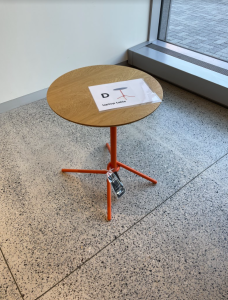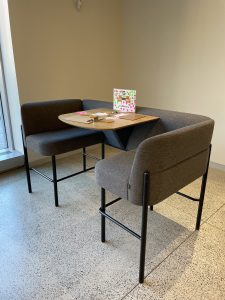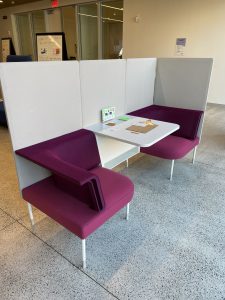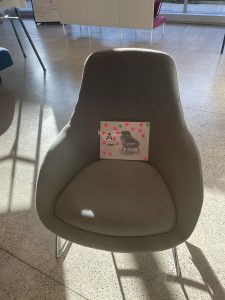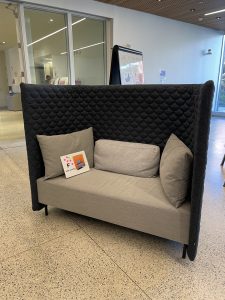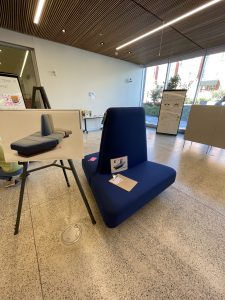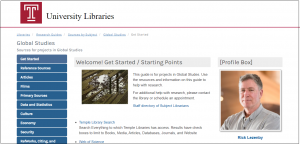A guest post from Alicia Pucci and Annie Johnson
Since the launch of Temple University’s first institutional repository (IR) TUScholarShare in fall 2020, Alicia Pucci, TUScholarShare’s administrator, and Annie Johnson, assistant director for open publishing initiatives and scholarly communications have tested strategies for raising awareness of the service and depositing more content. In this guest post, they describe a project with liaison librarians, undertaken with support from the Scholarly Communications Strategic Steering Team, that was designed to address some of these concerns.
Background
The CV review service is one of four mediated TUScholarShare deposit services that are offered to Temple faculty and staff. This is where TUScholarShare staff review a CV or list of publications, determine copyright and permissions for every work, and deposit permitted scholarship to the repository on the author’s behalf. By adopting a “we’ll do it for you” service model, depositors do not need to do any heavy lifting to self-archive their scholarship, which also makes this deposit option a good first step toward familiarizing themselves with TUScholarShare. Like other institutions that have a similar service in place for their IR, we currently rely on a student assistant to help with this review work. Yet, in spite of this support, our most popular service among faculty depositors remains a labor and time-intensive workflow for the TUScholarShare team. How do we actively promote the use of this service to faculty while making the workflow more sustainable? We decided to try turning to our colleagues in Learning and Research Services for additional support.
In fall 2021, we asked for liaison librarians to volunteer to review at least one CV for a faculty member from their department by the end of the fall 2021 semester. In order to support them in undertaking this work, we conducted a two-part training on the CV review service for liaisons and other interested library staff. The greater part of the training focused on showing liaisons how to do the first two parts of the CV review workflow: conducting targeted outreach to their faculty to obtain a CV and reviewing copyright and self-archiving permissions of the faculty member’s scholarship.
Objectives
Our objectives for this project were twofold. First, we aimed to raise awareness of TUScholarShare among faculty. By drawing on the existing rapport between liaisons and their departments, we hoped to initiate a conversation about the CV review service and establish a level of trust in TUScholarShare. Second, by asking liaisons to conduct targeted outreach to their departments and review CVs, we aimed to create a more streamlined and sustainable workflow for depositing new content into the repository.
Key Findings
Overall, 11 liaisons participated in the training and 10 were able to obtain at least one faculty CV to review. By the end of the project, 10 CVs (across 5 different schools/ colleges) were reviewed and a total of 93 new items were deposited to the repository. Once each liaison completed their review, they were asked to complete a short survey. The survey found that:
- Faculty were more responsive and willing to submit their CV for review if they had a previous interaction or an existing relationship with the liaison. Only 1 liaison was unable to receive a response from the faculty they reached out to.
- The total time it took for liaisons to review 1 CV varied greatly, from 1 hour to 4 days. However, the time frame for liaisons participating in this project was stretched out over a span of 1-3 months.
- Liaisons felt more confident talking about the service and related topics (i.e. Creative Commons licenses, pre-prints, post-prints, permissions) after completing the review process.
- Some of the benefits of participating in this project noted by liaisons included: “opened a channel of communication with faculty on publishing topics,” “gained insights into faculty publishing habits,” and “learned how to track down hard-to-find materials.”
- The most common challenge among liaisons was understanding how to read and navigate the publisher policy database Sherpa Romeo. An in-depth review of this tool was not covered in the training.
While the project was a success in that liaisons are now more prepared to educate faculty about the service, their targeted outreach efforts did not garner much interest and no additional CV requests were received outside of the project. In addition, while new content was deposited to the repository, the workflow was more slow-going when compared to its typical turnaround time because it required more oversight and support from the TUScholarShare Administrator, Alicia Pucci. Finally, many liaisons understandably found that it was hard to make the time, with all of their other responsibilities, to complete this extra work. Although all the CV reviews were supposed to be completed by the end of December 2021, many liaisons were not able to finish until spring 2022.
Recommendations for Future Involvement
Members of the SCSST sat down to discuss the results of the survey and to brainstorm strategies for moving forward with this work. Some members of the team had also participated in the project reviewing CVs, so they were able to expand on their responses to the survey. Ultimately, the group concluded that this model would not work as a permanent method to grow the content in the repository and make the CV review service more sustainable. More staffing, whether in the form of student workers or permanent staff members, is needed to continue to grow this service.
Other ideas and thoughts that came out of the SCSST’s assessment of the project include:
- Create more personalized outreach emails about the service to faculty that appeal to them (e.g. their discipline, their role in academia) and explain the benefits of self-archiving their work beyond discovery (e.g. built-in metrics to reflect a scholar’s influence and impact, see the work of their colleagues in the repository).
- Identify liaisons from the project that are interested in doing more CV review work in the future. If TUScholarShare receives a CV review request from a faculty member in their department, and the liaison has time, they can do the review themselves.
- Consider other ways to scale up the service workflow:
- Approach a specific department on campus to work with to review CVs for all of their faculty members. A large-scale project allows for a more flexible turnaround time to complete this work.
- Review CVs for faculty members from similar disciplines, especially if they are known to publish in the same outlets. This would cut down on the time it takes to check publisher permissions.
- Consider alternative ways for liaisons to get involved in this work without having to review CVs:
- Instead of having liaisons do the initial full CV review, they will do upkeep on CVs of faculty from their departments (i.e. check for new publications to deposit to the repository).
- Outline different levels of involvement that liaisons can choose from that works best with their current workload/ schedules.
In light of our results, we are currently reassessing how to continue to grow the repository and how to involve liaisons in repository work. As a nascent repository, should we prioritize creating a sustainable flow of content into the repository to demonstrate its relevance to faculty? Or should our focus be on educating liaisons about the benefits of the service and the type of work it entails so they may become better advocates of the repository? Currently, with our limited staffing, it is simply not possible to do both.
Special thanks to Michelle Cosby, Kristina De Voe, Lauri Fennell, Keena Hilliard, Rebecca Lloyd, Ryan Mulligan, and Natalie Tagge from the SCSST, as well as to all the liaisons who volunteered to participate in this project.



